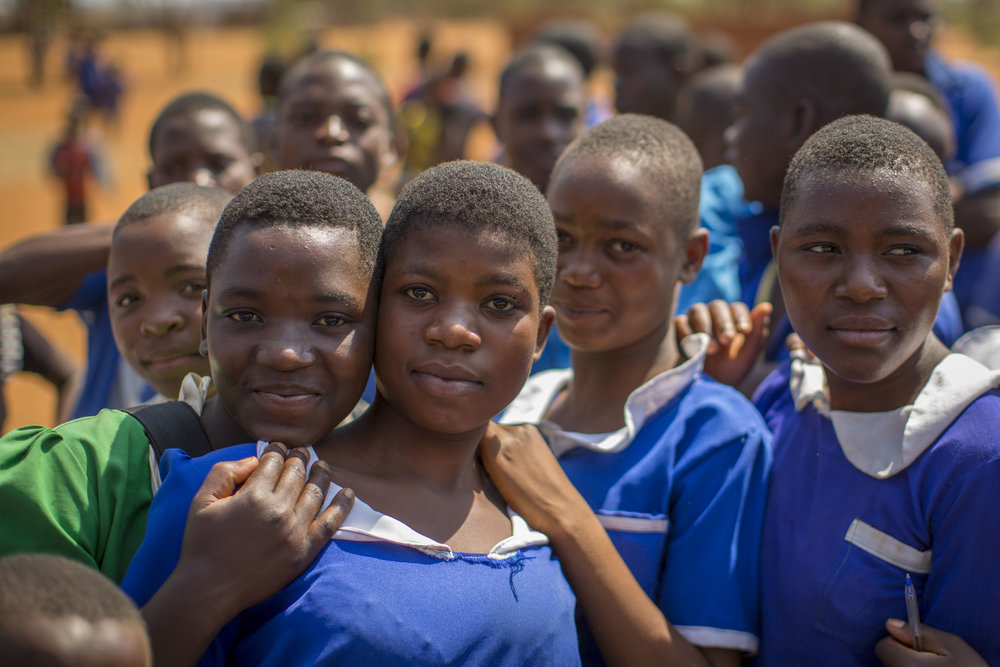Long walk to end child marriages
Chikondi Banda envied her peers who had smartphones and money from their boyfriends.
At the age of 14, the girl from Sitolo Village, Traditional Authority Chikumbu in Mulanje, found a man to spoil her.
“Alas! I ended up pregnant and dropped out in Standard 6 at Manyamba Primary School,” she recalls.

The second born in a family of three angered her parents, who survive on piecework in homes and crop fields of well-off neighbours.
“When they learned of the pregnancy, they nearly disowned me,” she narrates. “They were at a loss because I was still in school and it would never be easy for them to support me and the unborn.”
Banda sneaked out of her parents’ home to marry the 21-year-old man responsible for the pregnancy. However, marriage was not as rosy as she thought.
It was marked by endless torture, tension and fights with her husband. Besides, the baby died five days later, ramping up abuse.
“My husband could hardly fend for the family. Every time, he could find excuses to beat me. I had nowhere to run. I kept on persevering, regretting to have given in to peer pressure,” Banda laments.
The teen mother personifies the plight of many Malawian girls, half of whom marry before their 18th birthday, the constitutional marriageable age for boys and girls in the country.
The UN Human Rights Commission reports that child marriages remain widespread in sub-Saharan Africa due to cultural practices, poverty and indifference.
The UN Convention on the Rights of the Child says illicit marriages deny children their right to be protected from harmful practices, abuse and exploitation.
Child marriages take away their right to develop to their fullest, the international agreement says.
In October last year, the UN Children’s Fund (Unicef) published an analysis of global trends and progress to end child marriages.
The report shows that the proportion of women marrying young has decreased by 15 percent from one in four to one in five.
“This means that over the last 10 years, the marriages of some 25 million girls have been averted,” reads the report.
It calls on governments and the international community to continue initiating efforts toward eliminating child marriages by 2030 in line with Sustainable Development Goal (SDG) five.
Ministry of Gender, Children and Social Welfare spokesperson Fred Simwaka says the country is on track to end child marriages because of massive interventions implemented by the government and its partners.
He says nearly one million children were withdrawn from marriage in 2021.
The publicist says child marriage rates nationwide have decreased from 46 percent to 38 percent.
“Since we started fighting child marriages in Malawi, not much effort was being initiated. But in 2021, we saw a number of organisations with communities advocating for ending child marriages at all levels.
The Malawi Multiple Indicator Cluster Study indicates that 900 000 children were rescued from marriages in 2021.
“This is an improvement from the previous years,” Simwaka says.
Banda was among the children rescued from the outlawed marriages by Manyamba Mother Group last year.
Chisomo Ngozi, leader of the concerned mothers, is happy that the girl returned to school. The Standard Seven girl aspires to become a nurse.
Simwaka commends the government and its partners for stepping up campaigns to sensitise communities to the dangers of child marriages and benefits of keeping girls in school.
People Saving Girls and Risk team leader Caleb Ng’ombo urges government to invest more in efforts to eliminate child marriages within eight years.
“Statistically, 900 000 is a good figure, but it does not reflect real impact on the ground. Let us devise more innovative ways to address underlying causes of child marriages and other child-related abuses,” she states.
The activist wants government to scale up social cash transfer and other social protection programmes to safeguard children from ultrapoor families from marrying young.





